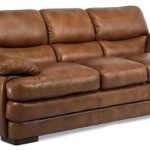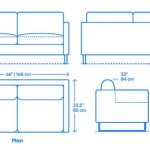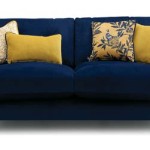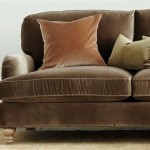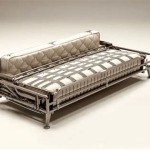Sofa vs. Couch: Unraveling the Upholstered Enigma
The terms "sofa" and "couch" are often used interchangeably, leading to confusion about whether they represent distinct pieces of furniture or simply different names for the same thing. This article delves into the nuances of these two terms, exploring their historical origins, perceived connotations, and contemporary usage.
Etymology and Historical Context
Understanding the linguistic roots of "sofa" and "couch" provides valuable insights into their historical divergence. "Sofa" originates from the Arabic word "suffah," referring to a raised platform covered with cushions and used for seating. This term entered the English language during the late 17th century, initially denoting a luxurious and ornate piece of furniture.
"Couch," on the other hand, derives from the Old French word "coucher," meaning "to lie down." This etymology reflects the historical function of the couch as a piece of furniture primarily intended for reclining or sleeping. The term "couch" emerged in Middle English and has been used to describe various types of seating and resting furniture.
Perceived Connotations and Social Context
Over time, "sofa" and "couch" have acquired distinct social connotations, influencing their usage in different contexts. "Sofa" tends to evoke images of formality, elegance, and higher social status. It is often associated with living rooms and formal reception areas, suggesting a more structured and refined setting.
"Couch," conversely, carries a more casual and relaxed connotation. It suggests comfort, informality, and everyday use, often associated with family rooms, dens, and less formal living spaces. The term "couch" can also evoke images of rest and relaxation, such as "couch potato."
Construction and Design
While there are no strict design rules dictating what constitutes a "sofa" versus a "couch," certain design elements often align with the perceived connotations of each term. Sofas frequently feature more structured designs, with straight lines, tailored upholstery, and decorative details like button tufting or nailhead trim. They may also incorporate firmer cushioning and more upright seating postures.
Couches, in contrast, often exhibit looser, more relaxed designs, with softer cushions, deeper seating, and less emphasis on formal aesthetics. Sectionals, recliners, and futons, while technically types of upholstered seating, are more commonly referred to as couches due to their informal and functional nature.
Contemporary Usage and Regional Variations
In modern usage, the terms "sofa" and "couch" are largely interchangeable, with regional variations influencing their prevalence. In some regions, "sofa" is the preferred term, particularly in formal contexts or when describing upscale furniture. In other areas, "couch" is more commonly used, reflecting a more casual and relaxed approach to language.
The context of the conversation also plays a role in determining which term is more appropriate. When discussing interior design or furniture sales, "sofa" might be used more frequently due to its perceived sophistication. In casual conversation, "couch" is often the preferred term.
Marketing and Retail Context
In the marketing and retail landscape, both "sofa" and "couch" are utilized strategically to target specific consumer demographics. Retailers selling high-end furniture often prefer the term "sofa" to emphasize the elegance and exclusivity of their products. Conversely, retailers targeting a broader market often utilize "couch" to convey accessibility and affordability.
Product descriptions may also employ both terms to capture a wider audience and avoid alienating potential customers who prefer one term over the other. The choice of terminology can influence consumer perception and purchasing decisions, highlighting the importance of understanding the nuances of these two terms.
Size and Capacity
While size is not a defining factor, it can sometimes contribute to the usage of "sofa" or "couch." Larger upholstered pieces intended for multiple people are often referred to as sofas, especially if they have a formal appearance. Smaller pieces designed for two or three individuals might be more commonly called couches, especially in informal settings.
However, this distinction is not absolute, and both terms can be used to describe furniture of varying sizes. The overriding factor remains the perceived formality and style of the piece, rather than its physical dimensions.
Material and Upholstery
The type of material and upholstery can also influence the perceived distinction between a sofa and a couch. Luxurious materials like leather or velvet are often associated with sofas, reinforcing their image of elegance and sophistication. More casual fabrics like cotton or microfiber are often found on couches, contributing to their relaxed and comfortable feel.
However, it's important to note that these are generalizations and not definitive rules. Couches can certainly be upholstered in luxurious materials, and sofas can be covered in more casual fabrics. The overall design and context ultimately determine whether the piece is perceived as a "sofa" or a "couch."

Sofa Vs Couch Which One Is Better Love My Beds

Faq What S The Difference Between A Sofa And Couch Wfmo

Faq What S The Difference Between A Sofa And Couch Wfmo

Sofa Vs Couch What Is The Difference

What Is The Difference Between A Sofa And Couch

Sofa Or Couch Quick And Dirty Tips

What S The Difference Between Sofa And Couch

Sofa Vs Couch Best Collections Of Sofas And Couches Sofacouchs Com Cool Microfiber Set

What S The Difference Between Sofa And Couch
What S The Difference Between A Couch And Sofa

